Degenerative Disc Disease
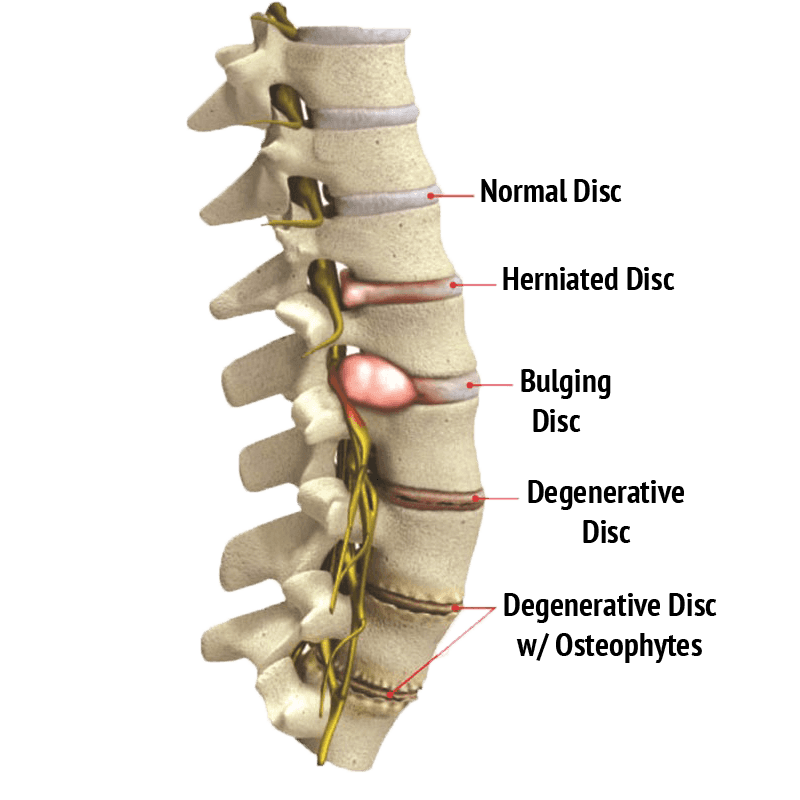
Lumbar Degenerative Disc Disease
Looking for information on lumbar degenerative disc disease? You’ve come to the right place. This comprehensive guide provides everything you need to know about this condition, from its causes and symptoms to treatment options and steps you can take to prevent it. Read on to learn more!
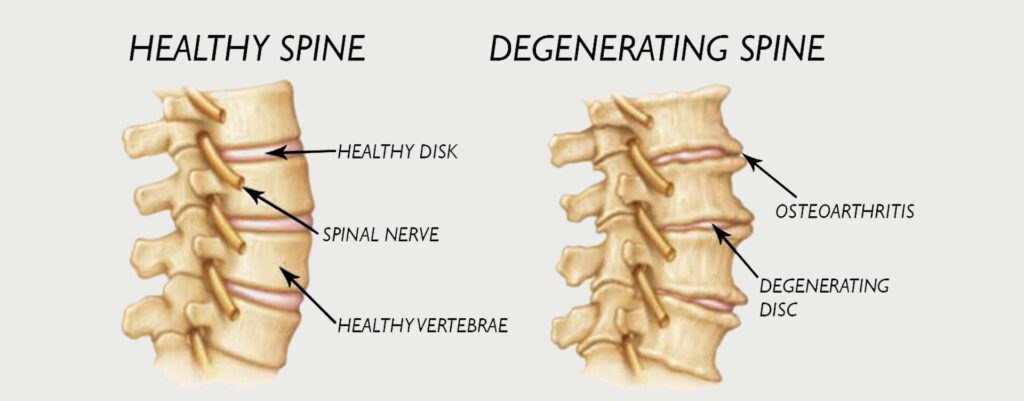
What is Lumbar Degenerative Disc Disease?
Lumbar degenerative disc disease is a condition that results in the deterioration of one or more discs in the lumbar spine. The discs act as cushions between the vertebrae, and their degeneration can lead to pain, stiffness, and other symptoms.
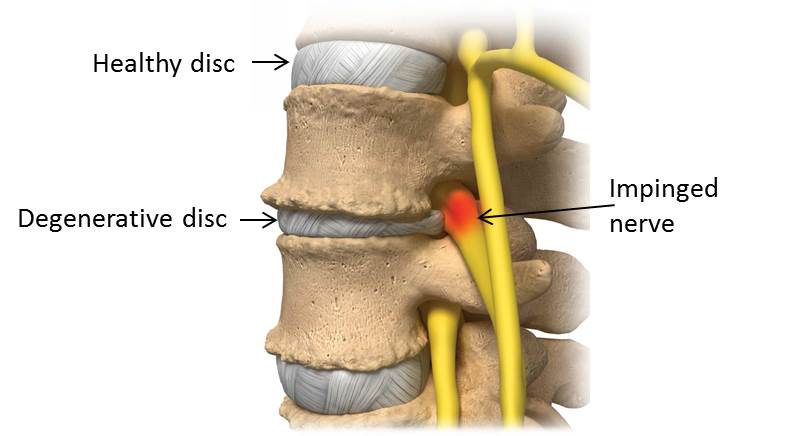
Causes of Lumbar Degenerative Disc Disease
There are a variety of factors that can contribute to the development of lumbar degenerative disc disease. These include:
Age:
The discs in the spine begin to deteriorate with age, which can lead to degenerative disc disease.
Injury:
An injury to the spine, such as a herniated disc, can cause degenerative changes in the discs.
Repetitive stress:
Repetitive stress on the spine, such as from lifting heavy objects or participating in contact sports, can lead to degenerative disc disease.
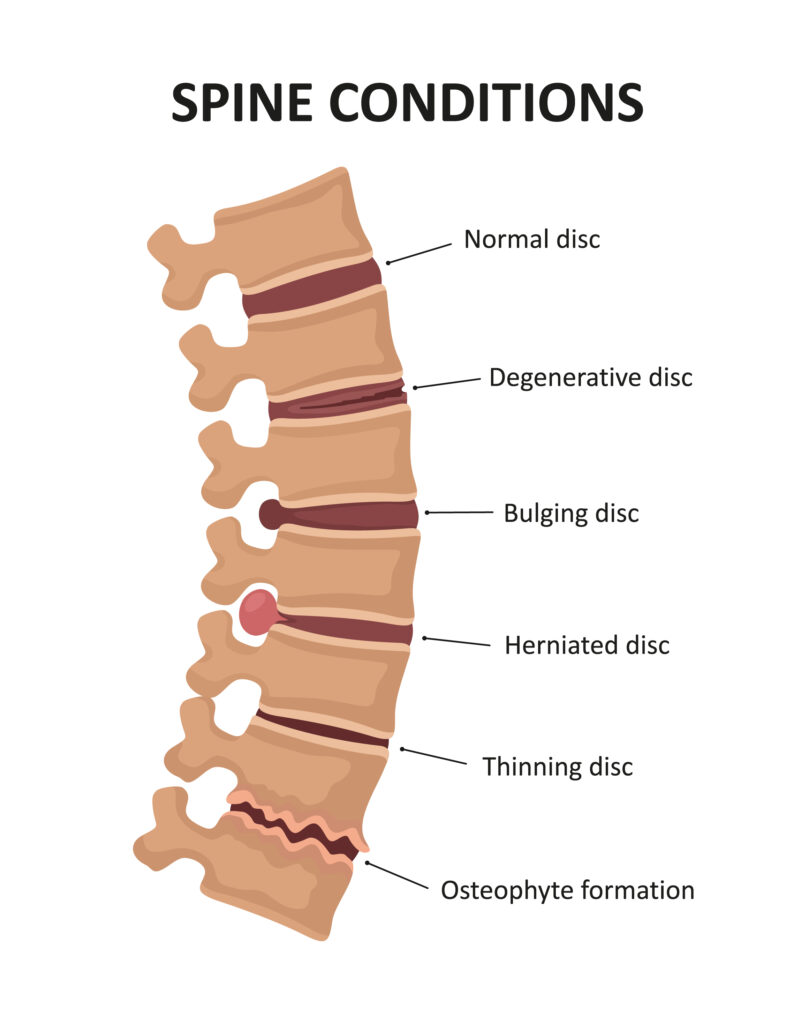
Symptoms of Lumbar Degenerative Disc Disease
The symptoms of lumbar degenerative disc disease vary depending on the severity of the condition. They may include:
- Back pain that is worse with activity or when standing for long periods of time
- Pain that radiates from the low back to the buttocks or legs
- Stiffness or limited mobility of the spine
- Muscle spasms
- weakness or numbness in the legs or feet
If you experience any of these symptoms, it is important to consult your doctor for a proper diagnosis.
Another way to tell if you have a rib flare is by your range of motion.
If you can’t touch your fingers to your toes, or if you have trouble taking a deep breath, this may be a sign that your ribs are flared.
Diagnosis of Lumbar Degenerative Disc Disease
There are a number of different ways to diagnose lumbar degenerative disc disease.
Physical Examination:
Your doctor will likely begin with a physical exam. This will help them rule out other potential causes of your pain. During the exam, they’ll check for:
Tenderness or muscle spasms in your back
Range of motion in your back and legs
Weakness or numbness in your legs
Reflexes in your knees and ankles
Straight-leg raise test:
Your doctor may also order this test, which involves lying on your back with your legs straight. They’ll then slowly lift one leg until you feel pain. This can help them pinpoint the location of the herniated disc.
Imaging Tests:
If your doctor suspects you have a herniated disc, they may order one or more imaging tests to confirm the diagnosis. These tests may include:
X-ray:
This test can show the wear and tear changes that often occur with degenerative disc disease. However, it won’t show a herniated disc.
Magnetic resonance imaging (MRI):
This test uses powerful magnets and radio waves to create detailed images of your spine. An MRI can show a herniated disc and other problems with your spine.
CT scan:
This test uses X-rays and computer technology to create detailed cross-sectional images of your spine. A CT scan can also show a herniated disc and other problems with your spine.
Discogram:
This test is sometimes used to confirm the location of the herniated disc. During the test, a needle is inserted into the discs in your spine. Dye is then injected into the discs. This dye makes the discs visible on X-rays or CT scans.
Nerve conduction study:
This test assesses how well and how fast electrical signals move through your nerves.
EMG (electromyography):
This test assesses the health of the muscles and the nerves that control them.
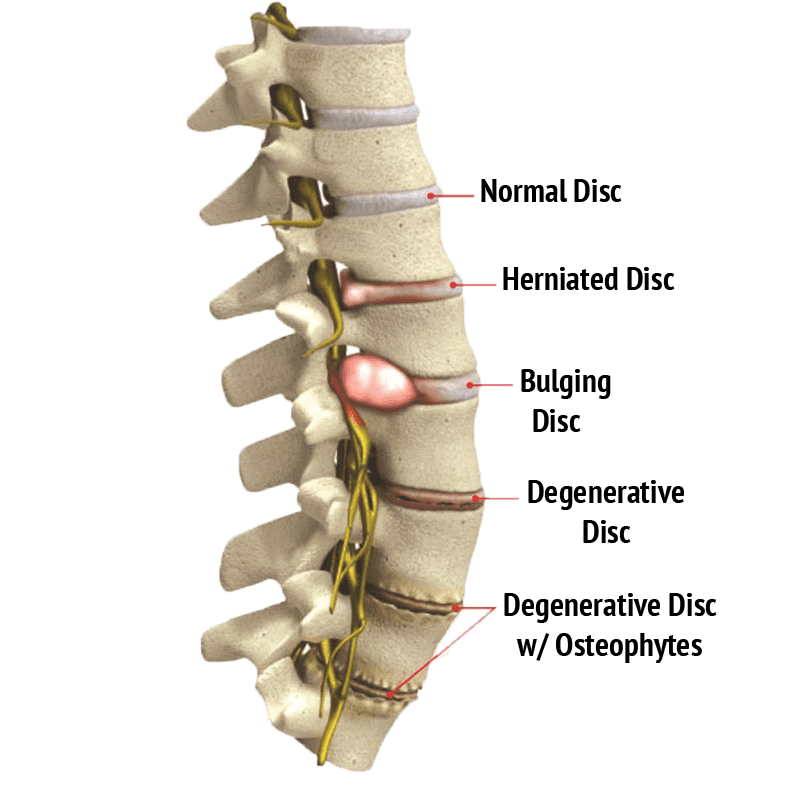
Treatment for Lumbar Degenerative Disc Disease (DDD)
There are a number of different treatment options for lumbar DDD. The type of treatment you receive will depend on the severity of your symptoms.
If you have mild symptoms, your doctor may recommend over-the-counter pain medication or physical therapy. If your symptoms are more severe, your doctor may recommend injections, surgery, or a combination of these treatments.
Injections:
Injections can help to relieve pain and inflammation in the affected area. Common types of injections used to treat lumbar degenerative disc disease include epidural injections and facet joint injections.
Surgery:
Surgery is typically only recommended for people who have severe symptoms that do not respond to other treatment methods. There are a number of different types of surgeries that can be used to treat lumbar degenerative disc disease, including discectomy, laminectomy, and spinal fusion .
Physical therapy:
Physical therapy can help to strengthen the muscles around the affected area and improve your range of motion. Your physical therapist may also teach you exercises that can help to relieve pain and improve your symptoms.
The goal of treatment for lumbar degenerative disc disease is to relieve pain and improve your quality of life. Your doctor will work with you to create a treatment plan that meets your individual needs.
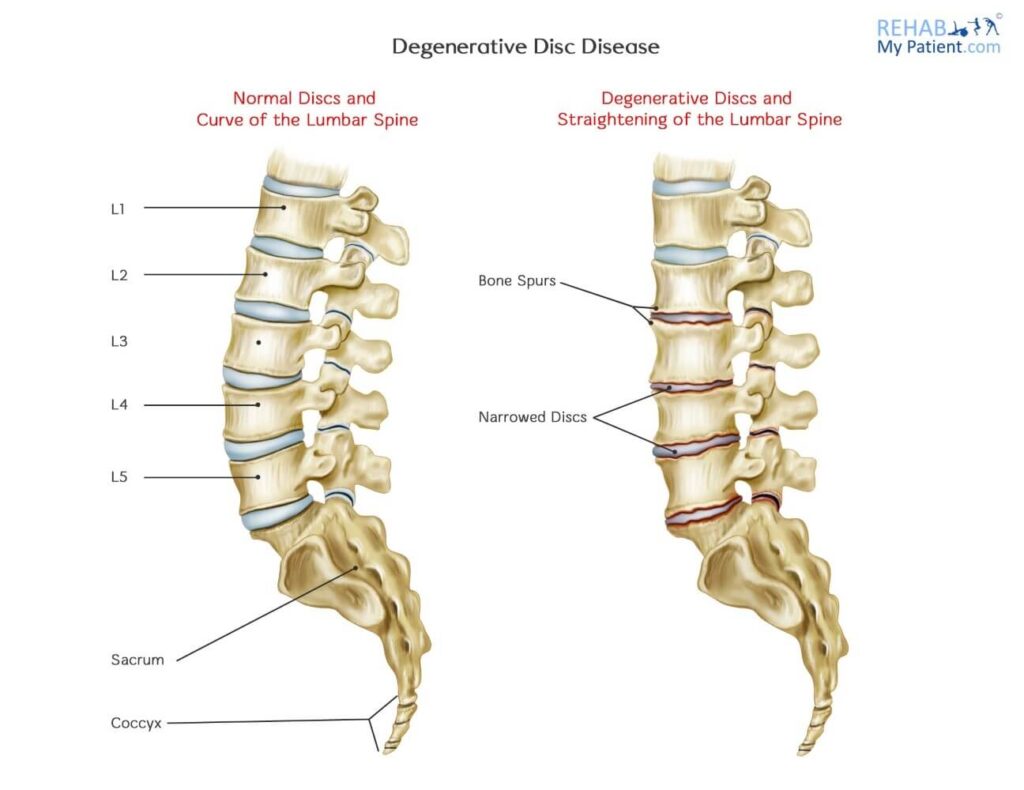
Tips to prevent Lumbar Degenerative Disc Disease
Following are some tips that may help prevent lumbar degenerative disc disease:
- Exercise regularly. Regular aerobic exercise and strength training can help maintain the health of your discs and other spine-related structures.
- Maintain a healthy weight. Excess weight puts additional stress on your spine and may contribute to the development of degenerative disc disease.
- Use proper posture and body mechanics when lifting objects. Avoid twisting or bending your spine when lifting, carrying, or moving heavy objects. Instead, use your legs and hips to do the work.
- Stay active and avoid prolonged periods of sitting or standing in one place. This can help keep your discs lubricated and prevent them from drying out.
- Quit smoking. Smoking has been linked to an increased risk of degenerative disc disease. It’s also a major risk factor for other spine-related conditions, such as osteoporosis and spinal stenosis.
- Manage your chronic health conditions. Conditions such as diabetes and obesity can increase your risk of degenerative disc disease. If you have a chronic condition, work with your doctor to keep it under control.
3 Ways to Level Up Your Rehab and Injury Prevention With Us





